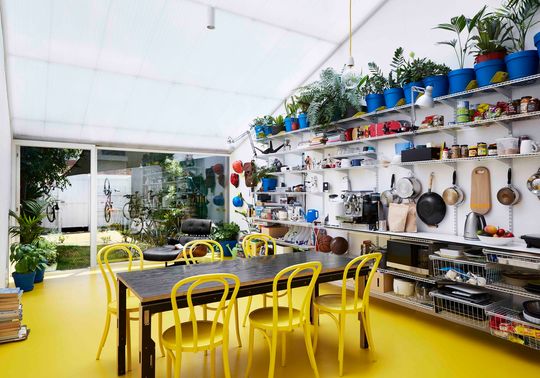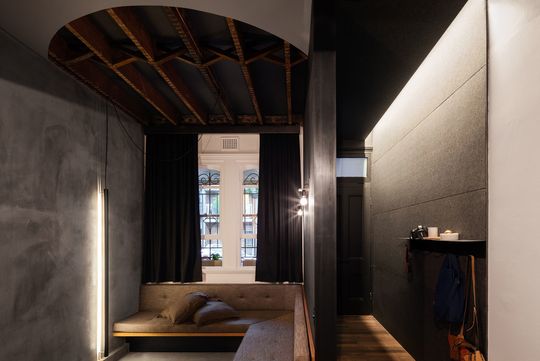We might turn to psychologists or drugs to improve our mental health, but are we missing a part of the solution that's closer to home? Our homes have a huge impact on our moods and how we feel and, when designed well, can support and improve our mental health. When designing our homes, we need to consider our mental health needs. Socialising, rest, engagement with the natural world and physical activity have all been shown to improve mental health, how can we design our homes to promote these activities?

BLOXAS Architects' Garden Pavilion uses the idea of connection to nature to help a client with an acute sleep disorder. The use of natural light and views of the landscape help to reinforce natural biorhythms. It's also been demonstrated that views of landscape and greenery can help to calm the mind, reducing stress and anxiety a big contributor to sleep disorders. The house can be closed down at night, blocking all light and sound. Charred cedar stutters, chosen for their sound absorbancy properties, combined with solid concrete block walls and a sound absorbing ceiling, creates a completely dark and quiet environment to promote restful sleep. The process of closing the shutters at night also creates a ritual, a mental cue that it's time for bed. While this is an extreme example, sleep deprivation is an increasing problem, so designing our homes to promote restful sleep is something that could improve our wellbeing.

Of course, there's also a connection between the weather and mental health. For example, conditions like seasonal affective disorder (SAD) are related to changes in the seasons and doctors see a rise in patients presenting with mental health concerns in winter. SAD is believed to be related to the changes to your body clock related to the reduced amount of winter sunlight. Accordingly, Light therapy is sometimes used as a treatment for SAD. With this in mind, Austin Maynard's Mental Health House uses a translucent polycarbonate roof to maximise the amount of natural light, even in the depths of winter. Colour psychology is also introduced with bright yellow used to promote happiness.

For an introvert, an important part of their home might be the need for a quiet place to reset and recover from an extroverted world. Given that introverts are often more sensitive to noise and other external stimuli, the perfect home to support an introvert would be quiet and have spaces to seek solitude. Breathe Architecture's Double Life House is the perfect example of a home for introverts, designed with acoustic panels and thick curtains help to dampen external sounds to create a quiet and restful home. If you are an introvert, don't be afraid to ditch the ubiquitous open-plan and instead create a home with rooms and nooks for alone time.
We cannot underestimate the potential of good design to support our mental health. We must design our homes not with the latest trends or resale value in mind, but how they can best reduce stress and anxiety and improve our sense of wellbeing. Even very simple ideas like good orientation for natural light and a great indoor-outdoor connection can make use feel better in our homes.